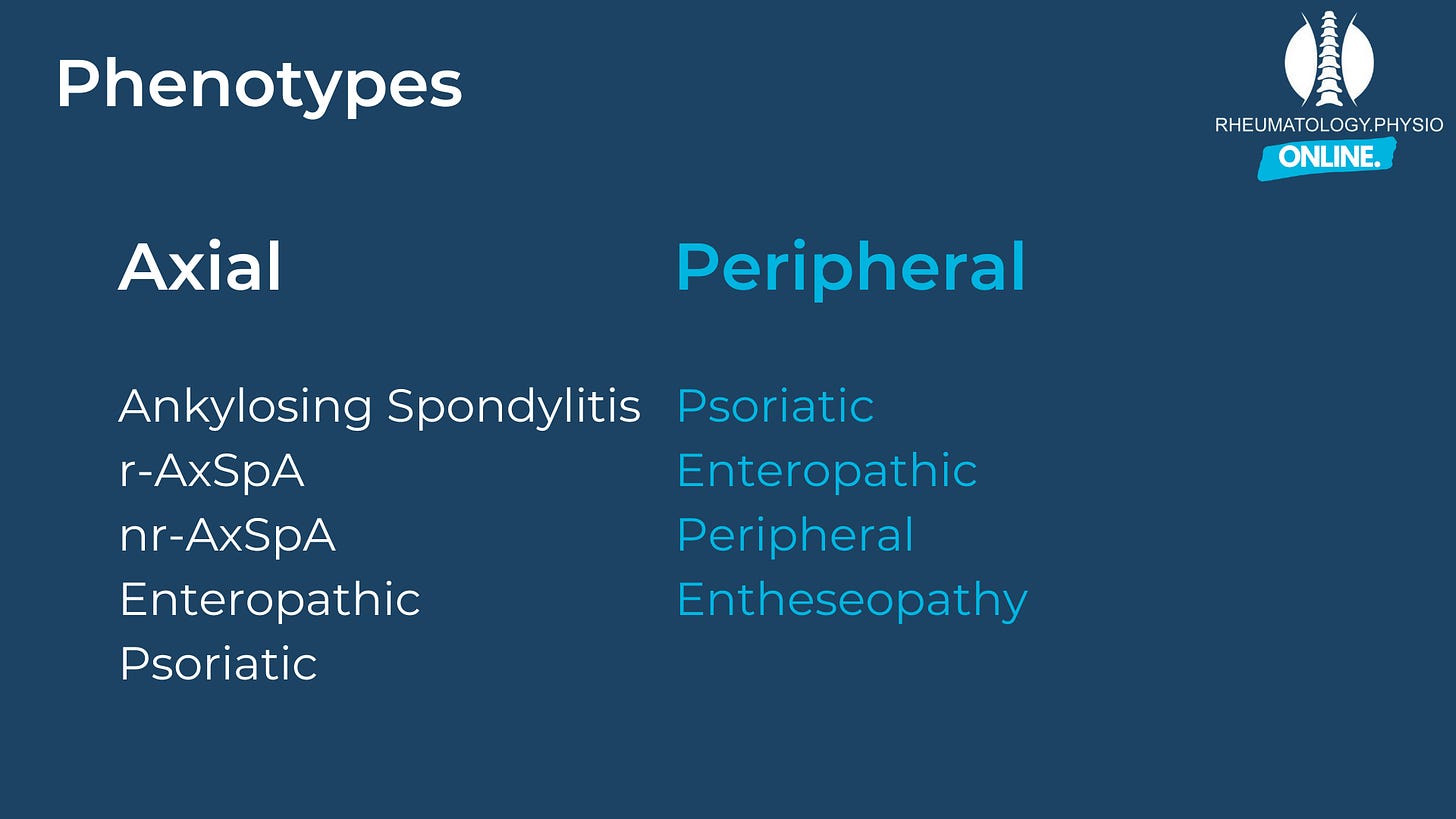Hello Rheumatology Fans!
In this article, we are going to explore the different conditions that fall under the umbrella of Spondyloarthritis.
Spondyloarthritis (SpA) is a family of auto-inflammatory conditions that primarily affect the spine and peripheral tendons but can also result in peripheral arthritis. What makes the landscape of SpA particularly complex is the presence of distinct subtypes, each with its own set of characteristics, symptoms, and challenges. Here we delve into the diverse realms of Spondyloarthritis subtypes, shedding light on the nuances that define and differentiate them.
Ankylosing Spondylitis (AS):
Ankylosing Spondylitis, the archetypal form of AxSpA, primarily affects the spine and sacroiliac joints. Over time, the inflammation of the entheses of the spinal ligaments leads to the fusion of the vertebrae.
Predominantly affecting HLA-B27 +ve males, this is the most well-known form of AxSpA. Ankylosing Spondylitis is an interchangeable term with Radiographic Axial Spondyloarthritis (r-axSpA). The radiographic component refers to visible changes on xray in either the sacroiliac joints as a result of sacroiliitis (sclerosis, erosions, fusion) or the spine (syndesmophytes, vertabral squaring, fusion).
Unfortunately, this can lead to missed diagnosis of the other forms of SpA as healthcare practitioners are looking for the structural changes that characterise AS.
Keep reading with a 7-day free trial
Subscribe to The Rheumatology Physio to keep reading this post and get 7 days of free access to the full post archives.




